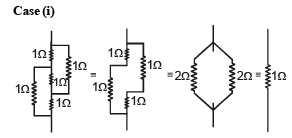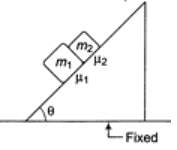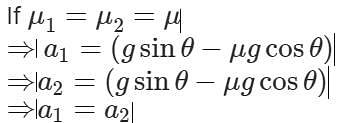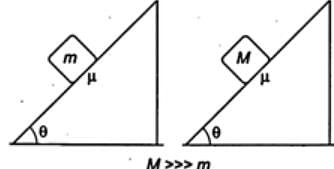DSSSB PGT Physics Mock Test - 4 - DSSSB TGT/PGT/PRT MCQ
30 Questions MCQ Test DSSSB PGT Mock Test Series 2024 - DSSSB PGT Physics Mock Test - 4
The angular speed of a wheel of radius 0.50 m moving with the speed of 20 m/s is:
| 1 Crore+ students have signed up on EduRev. Have you? Download the App |
A solid sphere is rotating in free space. If the radius of the sphere is increased keeping mass same, which one of the following will not be affected ?
[AIEEE 2004]
If the radius of the earth be increased by a factor of 5, by what factor its density be changed to keep the value of g the same ?
In constructing a large mobile, an artist hangs an aluminum sphere of mass 6.0 kg from a vertical steel wire 0.50 m long and 2.5 × 10−3 cm2in cross-sectional area. On the bottom of the sphere he attaches a similar steel wire, from which he hangs a brass cube of mass 10.0 kg. Compute the elongation.
Angle of contact of water proofing agent are generally
Hot coffee in a thermos flask is shaken vigorously, considering it as a system which of the statement is not true?
Three vessels of equal capacity have gases at the same temperature and pressure. The first vessel contains neon (monatomic), the second contains chlorine (diatomic), and the third contains uranium hexafluoride (polyatomic). The number of molecules
One mole of an ideal monatomic gas is at an initial temperature of 300 K. The gas undergoes an isovolumetric process, acquiring 500 J of energy by heat. It then undergoes an isobaric process, losing this same amount of energy by heat. Determine the new temperature of the gas
A uniform semicircular cylinder of radius R and mass m is displaced through a small angle
θ from its equilibrium position. It rolls without slipping during oscillations. The time period
of small oscillation is
In Young's double slit experiment, the distance of the n-th dark fringe from the centre is _
If the electric field is given by 26i – k. Calculate the electric flux through a surface of area 20 units lying in x-y plane.
Figure shows three resistor configurations R1, R2 and R3 connected to 3V battery. If the power dissipated by the configuration R1, R2 and R3, is P1, P2 and P3, respectively, then –
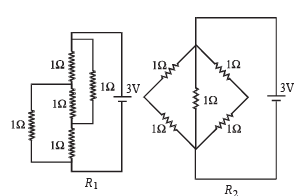
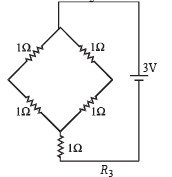
During an experiment with a metre bridge, the galvanometer shows a null point when the jockey is pressed at 40.0 cm using a standard resistance of 90 Ω, as shown in the figure. The least count of the scale used in the metre bridge is 1mm. The unknown resistance is
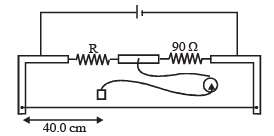
Eddy currents have negative effects. Because they produce:
In a series RCL circuit at resonance the applied ac voltage is 220 V. The potential drop across the inductance is 110V, what is the potential drop across the capacitor?
The objective of a telescope has a focal length of 1.2 m. It is used to view a 10.0 m tall tower 2 km away. What is the height of the image of the tower formed by the objective?
Suppose you are given a chance to repeat the alpha-particle scattering experiment using a thin sheet of solid hydrogen in place of the gold foil. (Hydrogen is a solid at temperatures below 14 K.) What results do you expect?
At a given time there are 25% undecayed nuclei in a sample. After 10 seconds number of undecayed nuclei reduces to 12.5%. Then mean life of the nuclei will be about
In an unbiased p-n junction, holes diffuse from the p-region to n-region because
A transistor is used in the common-emitter mode as an amplifier. Then
Water is flowing on the blades of a turbine at a rate of 100 kg-s-1 from a certain spring. If the height of the spring be 100 m, then power transferred to the turbine will be
Two blocks are placed on a wedge with coefficients of friction being different for two blocks. Choose the correct option (friction is not sufficient to prevent the motion).

Four capacitors of each of capacity 3μF are connected as shown in the adjoining figure. The ratio of equivalent capacitance between A and B and between A and C will be



